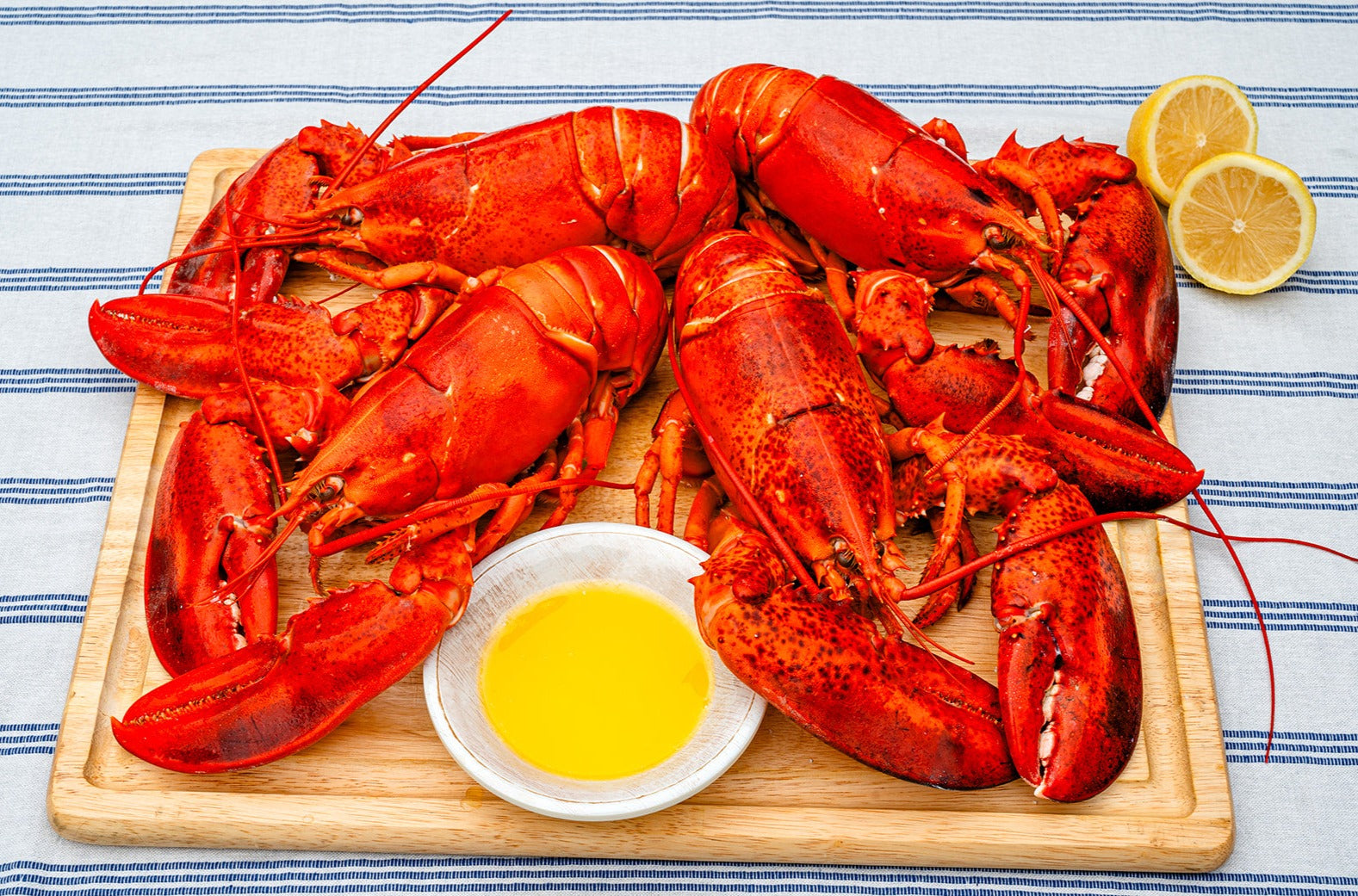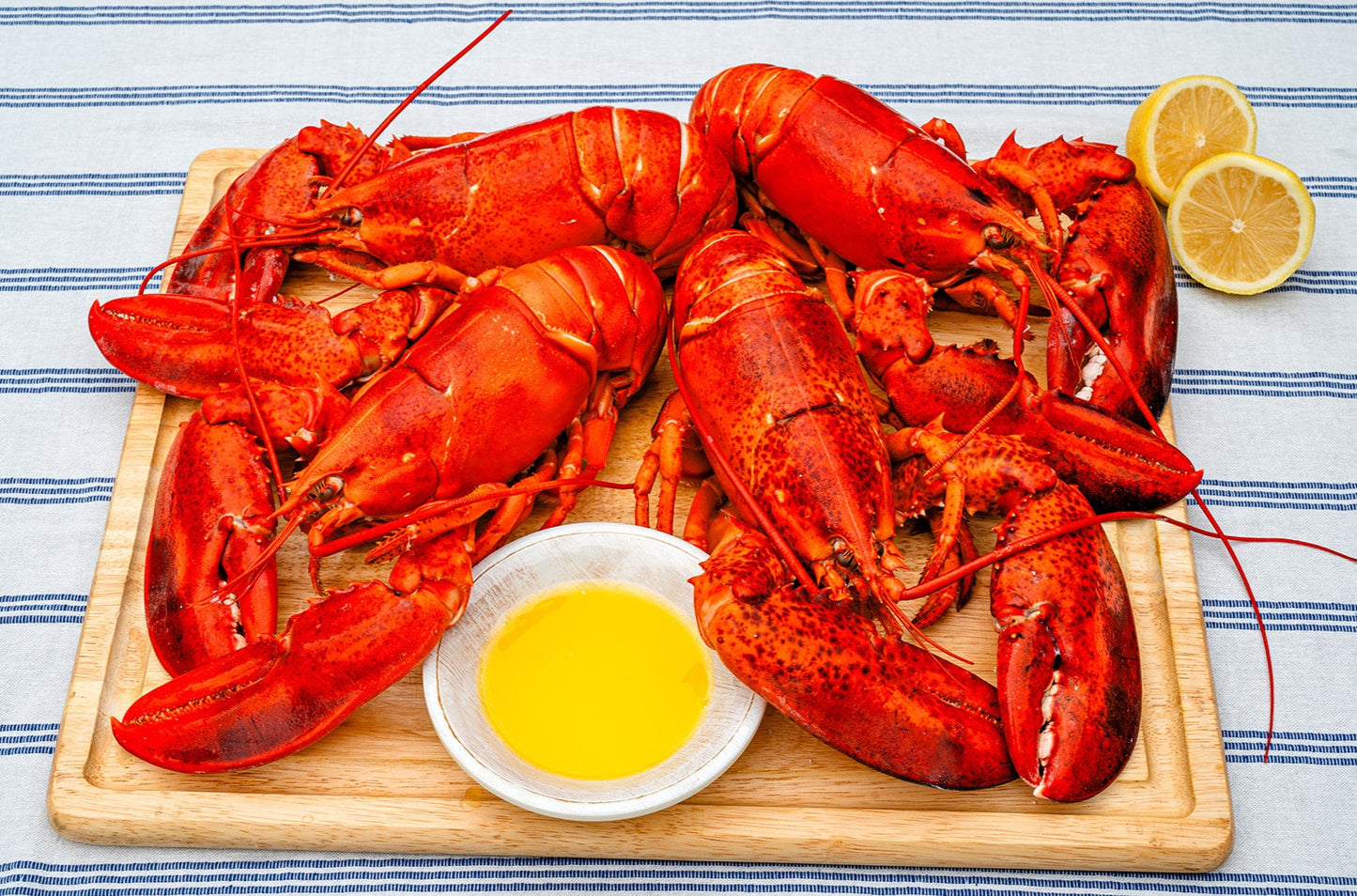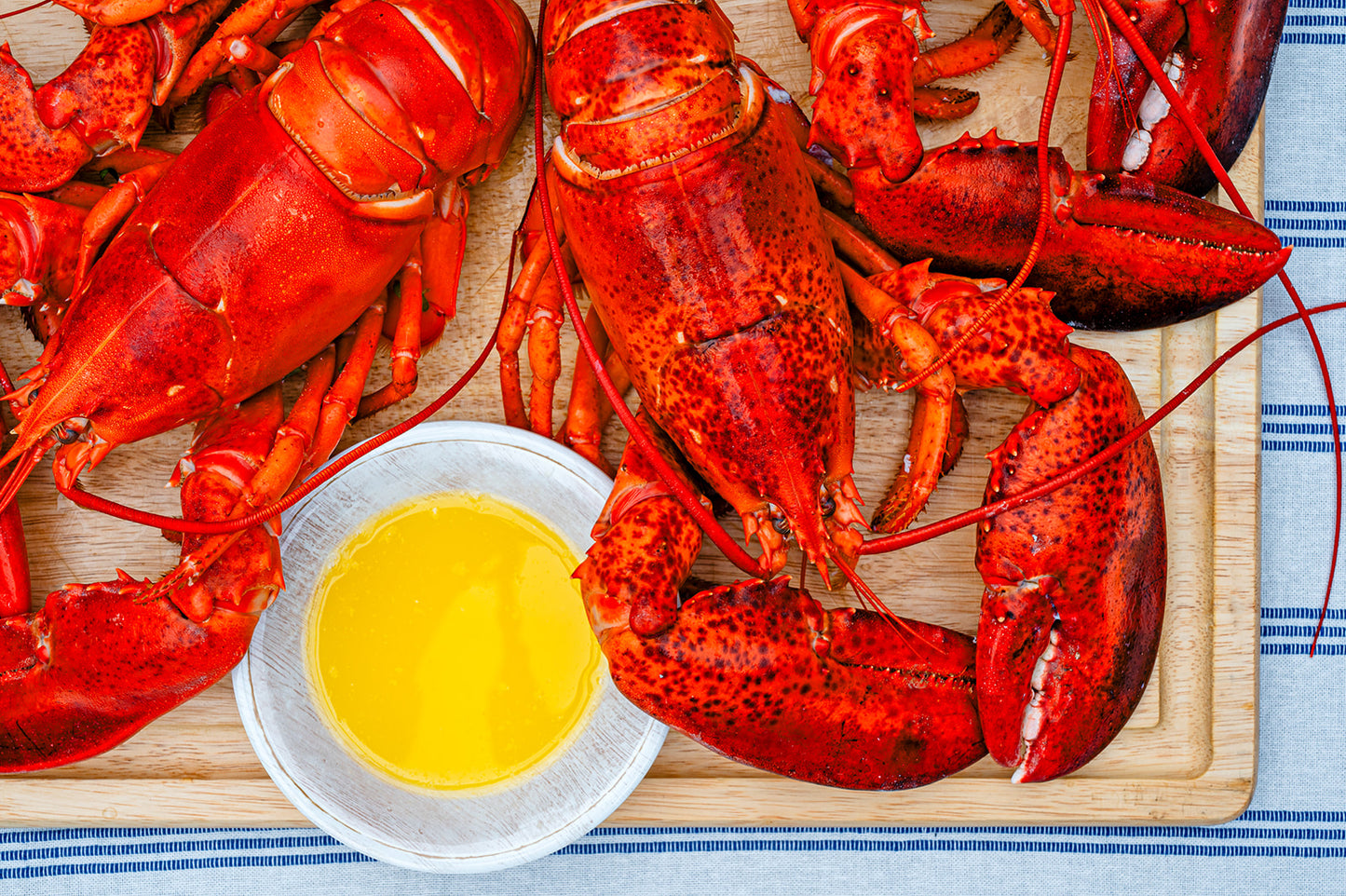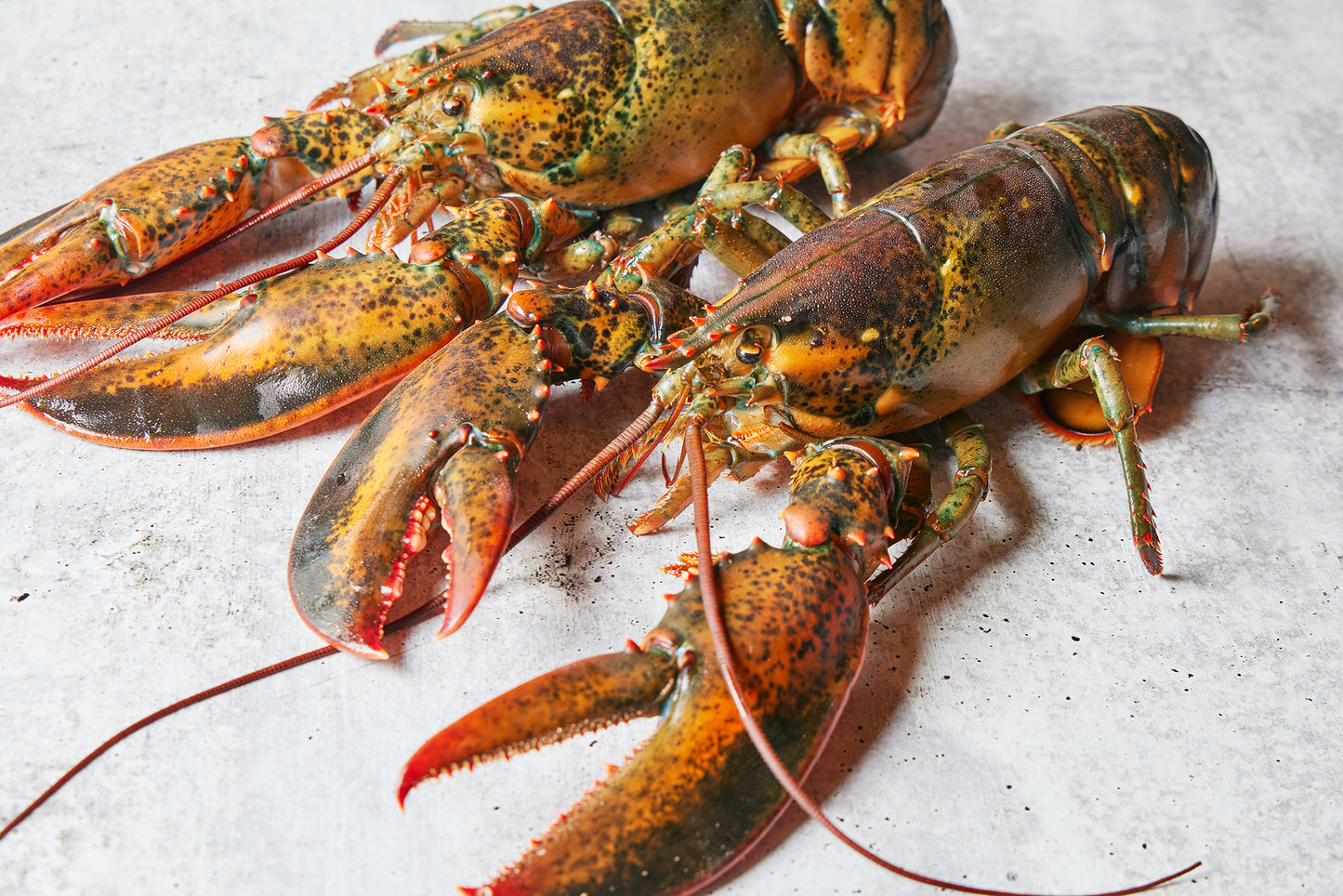Let's learn about how different body parts of the lobster each provide a different function:
- The tail of the lobster consists of different types of fins, the telson and the uropod. The lobster uses its fins to propel itself through the water. The larger portion of the tail is known as the abdomen of the lobster and contains the most meat.
- The pleopods (commonly known as the swimmerets) can be seen on the tail when the lobster is lying on its back. These are used to help the lobster swim and are also a great way to tell whether the lobster is male or female.
- The pereiopods (commonly known as the walking legs) are used to help the lobster walk along the floor of the ocean.
- The cephalothorax is commonly known as the body of the lobster, while the carapace is the outer shell surrounding the body.
- The two joints that connect the claws to the body of the lobster are known as knuckles. The meat inside the knuckles is known as the most delicate and tastiest part of the lobster.
- Lobsters also have two different types of claws. The smaller, sharper claw is known as the pincher and the larger claw is known as the crusher. The meat inside of the lobster’s claws is known to be the sweetest and most tender.
- The eye of the lobster provides the sense of sight.
- The maxillipeds is the mouth of the lobster and it is used to pass food to the mandible, which is the jaw like structure lobsters use to crush and ingest their food.
- The lobster’s antennae provide a sense of touch for the lobster while the antennules provide a sense of smell, similar to the human nose!





